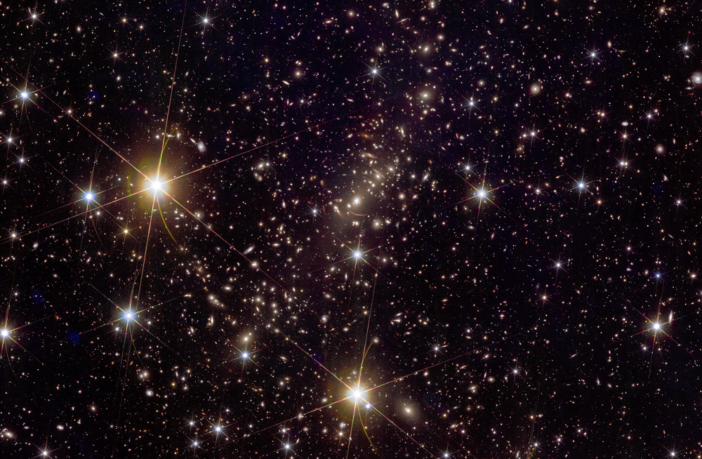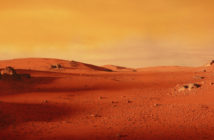Today, (23 May 2024) the European Space Agency’s (ESA’s) Euclid space mission releases five unprecedented new views of the Universe. The never-before-seen images demonstrate Euclid’s ability to unravel the secrets of the cosmos and enable scientists to hunt for rogue planets, use lensed galaxies to study mysterious matter, and explore the evolution of the Universe.
The new images are part of Euclid’s Early Release Observations. They accompany the mission’s first scientific data, also made public today, and 10 forthcoming science papers. The treasure trove comes less than a year after the space telescope’s launch, and roughly six months after it returned its first full-colour images of the cosmos.
The Open University’s Centre for Electronic Imaging (CEI) helped to develop the detectors for the VIS instrument, which takes the images and tested how they would perform in the harsh radiation environment in space.
The team has continued to monitor the detectors during the mission, allowing Euclid to return the best possible images and data for the mission’s lifetime.
Dr Jesper Skottfelt, Research Fellow at the OU’s CEI, said:
“These beautiful images really show the excellent performance of the detector from Teledyne e2v that the team at CEI has been involved in developing and testing. We will continue to track the performance of these devices and help mitigate the effects of the harsh radiation environment in space so they can deliver high-quality science for many years in the future.”
The full set of early observations targeted 17 astronomical objects, from nearby clouds of gas and dust to distant clusters of galaxies, ahead of Euclid’s main survey. This survey aims to uncover the secrets of the dark cosmos and reveal how and why the Universe looks as it does today.
Euclid will trace the hidden web-like foundations of the cosmos, map billions of galaxies across more than one-third of the sky, explore how our Universe formed and evolved over cosmic history, and study the most mysterious of its fundamental components: dark energy and dark matter.
The images obtained by Euclid are at least four times sharper than those we can take from ground-based telescopes. They cover large patches of sky at unrivalled depth, looking far into the distant Universe using both visible and infrared light.
While visually stunning, the images are far more than beautiful snapshots; they reveal new physical properties of the Universe thanks to Euclid’s novel and unique observing capabilities. These scientific secrets are detailed further in several accompanying papers released by the Euclid collaboration.
The early findings showcase Euclid’s ability to search star-forming regions for free-floating ‘rogue’ planets just four times the mass of Jupiter; study the outer regions of star clusters in unprecedented detail; and map different star populations to explore how galaxies have evolved over time. They reveal how the space telescope can detect individual star clusters in distant groups and clusters of galaxies; identify a rich harvest of new dwarf galaxies; see the light from stars ripped away from their parent galaxies – and much more.
Euclid produced this early catalogue in just a single day, revealing over 11 million objects in visible light and 5 million more in infrared light.
Stephen Serjeant, Professor of Astronomy at the Open University, commented:
“Euclid is genuinely transformative in its ability to capture vast areas of the sky to nearly Hubble Space Telescope quality.
“At the OU we are using the beautiful image quality of these very wide images to search for warps in space and time. This is where a distant galaxy is being seen through the warped space around a foreground one. It’s one of the few ways we have to directly see the existence of dark matter.”
Dr Ben Dryer, Research Fellow in the CEI added:
“These papers document over 15 years of work by the scientific community and the CEI to pull together our best shot at answering questions about the dark matter and dark energy that make up the majority of our universe. The years of work we have performed to understand the operation of the detectors in the space environment benefits not only Euclid science, but also many other missions in development and in flight.”
Explore Euclid’s Early Release Observations science papers in full.



